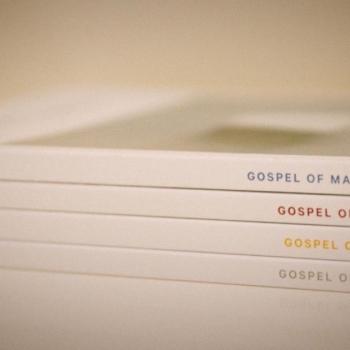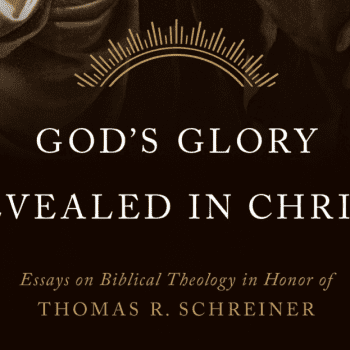In the first chapter, Köstenberger argues convincingly for the Last Supper being a Passover meal. He navigates through some of the seemingly contradictory accounts between the Synoptics and the Gospel of John. He notes specifically that the Synoptics clearly call the Last Supper a Passover meal, yet some scholars contend it was not because they were mistaken with the chronology or took theological liberties (9-10). In this section, Köstenberger displays these arguments and offers counter-arguments against them. Beyond this, he gives a few examples from later NT writings (Acts 2:42; 1 Cor. 5:7, 15:20) used to espouse a position against inerrancy, yet also adequately offers a rebuttal. In the final section of this article, Köstenberger offers 12 subtle, yet substantial inner-textual evidences from the Synoptics to further demonstrate his thesis that the Last Supper is indeed a Passover meal. This section is a brief, yet excellent, content-packed treatment against those who would hold that the Last Supper was not a Passover meal.
 Pennington was enjoyable to read, even though I didn’t necessarily agree with all of his conclusions verbatim on the matter of the fourfold witness of the Lord’s Supper. At a few points, I found myself asking him to get to the point, as he was keen to draw metaphorical language in illustration. This is more of a personal liking than one of necessity, as I am more of a “get to the point before you lose my interest” type of guy. In the latter half of his article, Pennington raises 5 common identifiers tying in the narrative of the Last Supper to the Passion, thus, demonstrating the multiple levels of theological significance to the meal itself. The first: the breaking of the bread and pouring of the wine are a parabolic enactment of Jesus’ sacrificial death. The second: the fulfillment of the Passover and the new Exodus. Third: the inauguration of the New Covenant. Fourth: community and identity formation are brought to culmination in the Supper, and lastly, as the Supper is to be seen as an appetizer to the eschatological banquet.
Pennington was enjoyable to read, even though I didn’t necessarily agree with all of his conclusions verbatim on the matter of the fourfold witness of the Lord’s Supper. At a few points, I found myself asking him to get to the point, as he was keen to draw metaphorical language in illustration. This is more of a personal liking than one of necessity, as I am more of a “get to the point before you lose my interest” type of guy. In the latter half of his article, Pennington raises 5 common identifiers tying in the narrative of the Last Supper to the Passion, thus, demonstrating the multiple levels of theological significance to the meal itself. The first: the breaking of the bread and pouring of the wine are a parabolic enactment of Jesus’ sacrificial death. The second: the fulfillment of the Passover and the new Exodus. Third: the inauguration of the New Covenant. Fourth: community and identity formation are brought to culmination in the Supper, and lastly, as the Supper is to be seen as an appetizer to the eschatological banquet.
James Hamilton heads up the chapter entitled “The Lord’s Supper in Paul.” In this chapter, Hamilton deals mainly with Paul’s treatment of the supper in 1 Cor., navigating through the various issues riff within the Corinthian church. Thus, as Paul’s theology is revealed, Hamilton argues, we are not seeing a systematic outline of the Supper – but a reactionary treatment based on the sins of factionalism, sexual sin, suits, mistreatment of lower classes, and so forth. There are a few points with which I feel Hamilton strays from the text, such as the higher class being present with the lower class in 1 Cor. 11 when the abuses were present, as opposed to a more traditional reading of the echelons eating without the “have nots,” leaving no food and later, that those who partook of the Supper and drank judgment upon themselves were not Christians beforehand, rather than the traditional view of those who are Christians, yet drank unworthily. However, beyond some of these disagreements, Hamilton does well addressing the themes Paul sets forth for the Supper.
The next two chapters, “A Glorious Inebriation”: Eucharistic Thought and Piety in the Patristic Era, and Carolingian Conflict: Two Monks on the Mass, give an historical framework for the Lord’s Supper. In the first of these two chapters, Haykin deals with Justin Martyr, Irenaeus, Cyprian, Ambrose, and Basil, in their respective stances. While each section on these historical figures is brief, it seems as if he was able to condense the material adequately in order to fit the need. This chapter could easily have been longer, giving more subtleties and depth to each man, but alas, only so much ink can be spilt in an article. Although I will say I was remiss to not see Augustine included in this section, arguably for his influence within the church as a late Patristic “contestant.” The second historical chapter is penned by David S. Hogg and deals with the medieval Eucharistic debate between Radbertus and Ratramnus. For a brief recap, Radbertus held to the physical presence of Christ in the elements while Ratramnus held to the spiritual presence. It would be well worth reader’s time to pay particular attention to this chapter, as historical debates naturally lead to differing outcomes and practices.
The next several chapters are devoted to Eucharistic thought among Roman Catholics (historically developed and present-day), the Reformers (Luther, Zwingli, Calvin), and the Baptist approach to the Supper. It would be easy for me to say that I liked Allison’s chapter the most in this book. He is an incredibly bright man and divides the issue fairly cleanly with respect to the Roman Catholic teaching on the Eucharist. If you’d like further reading from Allison on the RC church, pick up his other book from Crossway on Roman Catholic Theology (I’ve been through little of this book – but it is superb from what I have read). Through the chapters speaking on the Reformers, the reader is allowed a lens to the past in order to better comprehend the present (hence the divide liturgically between Lutherans and the Reformed camp). Beyond this, these chapters help to dispel a few notable myths that have made their way through church history (in particular, see the part about Zwingli). The last chapter in this section, dealing particularly with the historical beliefs through Baptists, deals extensively with the debate of an open/closed communion (though I don’t feel this is solely relegated to the Baptist history as a point of contention).
The last three chapters of the book deal more extensively with practical issues regarding the Lord’s Supper (with the last chapter of the book being the stronger of the three chapters). If one has paid particular attention to the weaknesses of the American church over the span of time, it really is not all of a surprising read in this section. The first of the three chapters, The Lord’s Supper: Celebrating the Past and Future in the Present, brings the reader to take a periscope view of the focus of the Supper, that is, looking intently to the past, present, and future aspects of the Eucharist. The second chapter deals more extensively with the nature of how the Supper affects our disposition to the remainder of the world in witness. More clearly, because we gather out of celebration and love for one another in unity of the gospel in light of what Christ has done, we then are able to display the nature of a people set apart. Even more clearly, the Supper is the place where we learn Christianity 101, and we keep coming back to it each time we partake. Finally, the last chapter of the book deals with the actual practical issues of how to observe the Supper. This portion will undoubtedly catch the most flack from people – yet I found it immensely helpful in simply thinking more in depth about the “ordinary” aspects of the Supper (i.e. how often should we partake; full loaf or pieces of bread/cracker; wine or juice). These are things a church develops a practice on, and most partaking of the elements don’t think beyond the actual act of taking the bread and the cup in contrition.
Overall, I enjoyed this book quite a bit. It has the weaknesses of any other book that contains brief articles on any given subject; some will be better than others, yet all are limited on time, space, and depth to a certain degree. If you are a Baptist, I would recommend reading this book (as it is specifically stated to be a Baptist book about Baptist thought on the Lord’s Supper). If you are not a Baptist, I would still recommend this book, as it gives an inside look to some of the particularities and distinctions of the Baptist faith – yet it also gives some very helpful chapters on the Lord’s Supper in general. Again, Allison’s section alone is worth the price of this book – and you will surely not be disappointed with the other portions.
Banner Image Credit: Day 158: Diffusion of Knowledge by Quinn Dombrowski; CC 2.0

Disclosure: I received this book free from Baker Academic through the media reviewer program. The opinions I have expressed are my own, and I was not required to write a positive review. I am disclosing this in accordance with the Federal Trade Commission’s 16 CFR, Part 255.













